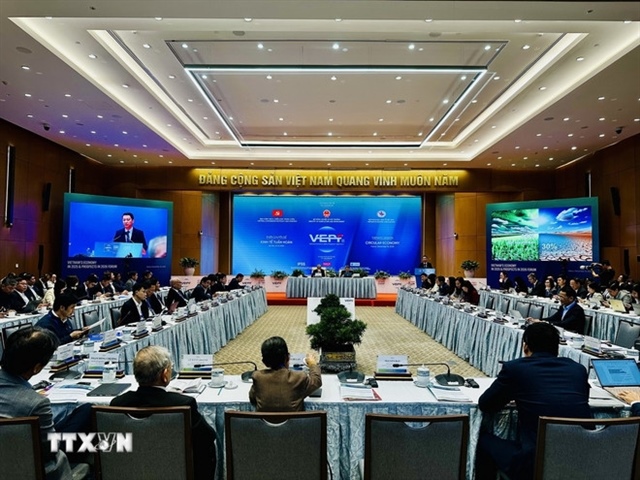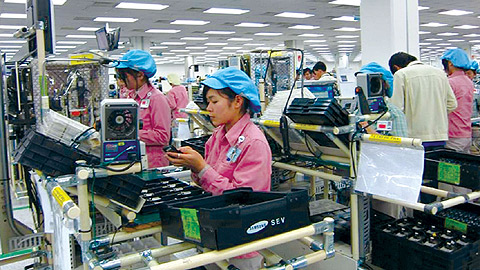Vietnam-EU FTA to benefit enterprises in Vietnam
Vietnam-EU FTA to benefit enterprises in Vietnam
An upcoming free trade agreement with the European Union will benefit many enterprises in Vietnam.

David O’Sullivan, EU diplomatic representative, said the Vietnam-EU Free Trade Agreement (FTA) was prompting many multinational companies to invest in Vietnam. Speaking at last week’s 9th Vietnam-EU joint meeting, he claimed that sectors like textiles, footwear, agriculture, high-technology and the motor industry would benefit from the FTA via tariff reductions which are due to be implemented by late 2014.
According to a March-released Mutrap report on a sustainable impact assessment of the FTA, by 2020, tariffs on footwear will be reduced to 0 per cent from the existing 12.4 per cent.
Locally-owned Hung Yen Garment Joint Stock Company is optimistic about the effects of the FTA. Last year the company’s export turnover from the EU was $21 million. “If the average export tariff is slashed to 0 per cent thanks to the FTA, this figure will be far higher,” said the company’s general director Nguyen Xuan Duong.
The local textile and garment industry last year earned an export turnover of $2.7 billion from the EU. If the FTA is agreed upon, this figure may rise to over $3 billion.
Also according to the report, a zero tariff rate will be applied for at least 90 per cent of wooden products exported to the EU.
With the local wood sector’s export turnover of $756 million last year from the EU, the tariff reductions from the existing average of 20-25 per cent would also greatly benefit the industry in the coming years, according to the Vietnam Timber and Forest Product Association.
The report emphasised that regarding the electronics sector, reducing tariffs will have an impact on volumes and prices of electric products imported from Europe. The FTA will create a huge business advantage for European exporters compared to their Asian competitors.
Regarding the motor sector, Vietnam can benefit from the increase in foreign direct investment from European manufacturers. The high-quality products in Europe can have a significant market share in Vietnam and the potential markets in neighbouring countries like Laos and Cambodia.
Claudio Dordi, the EU-Mutrap team leader for a European trade policy and investment support project, stated that negotiated reductions in tariff barriers alone would increase Vietnam’s exports to the EU by 30-40 per cent.
The FTA would enable Vietnam to have annual gains of about $1.5 billion in 2020 when most of the tariff reductions will have been implemented. The estimated increase in gross domestic product is about 2-2.5 per cent and real wages are estimated to improve by around 5 per cent.
Likewise, imports from the EU will increase by 25-35 per cent, reflecting the greater reduction in tariffs.
Currently, the EU is Vietnam’s major trading partner, with exports of over $24 billion. About one quarter of Vietnam’s exports go to the EU, while 13 per cent of imports originate from the EU.
Vietnam’s merchandise exports to the EU currently face an average tariff of 4.6 per cent, but this hides a number of tariff peaks. The highest tariff is on garlic, 300 per cent, but there are also very high tariffs on beef and dairy products.
EU exporters to Vietnam also face significant barriers on specific items, most notably on alcohol and tobacco products, where the tariff is set at 100 per cent. Motor vehicles, especially motorcycles, are also highly levied as are livestock products and textiles.
The FTA’s seventh round of negotiations concluded last week. “Vietnam suggested that the EU consider the differences in development levels and offer more flexible terms, especially in rice, farm produce, aquatic products, textiles and garments, and footwear. Other issues include public procurement, or points of origin for products. We want to see a win-win between Vietnam and the EU,” said Tran Ngoc Quan, head of the Ministry of Industry and Trade’s Market Department.
vir



















